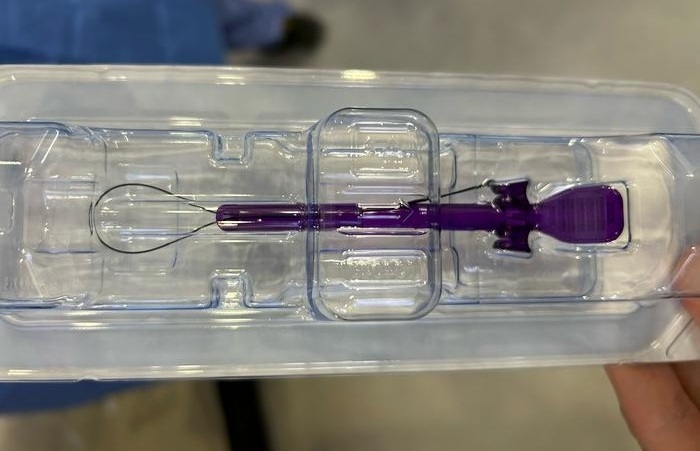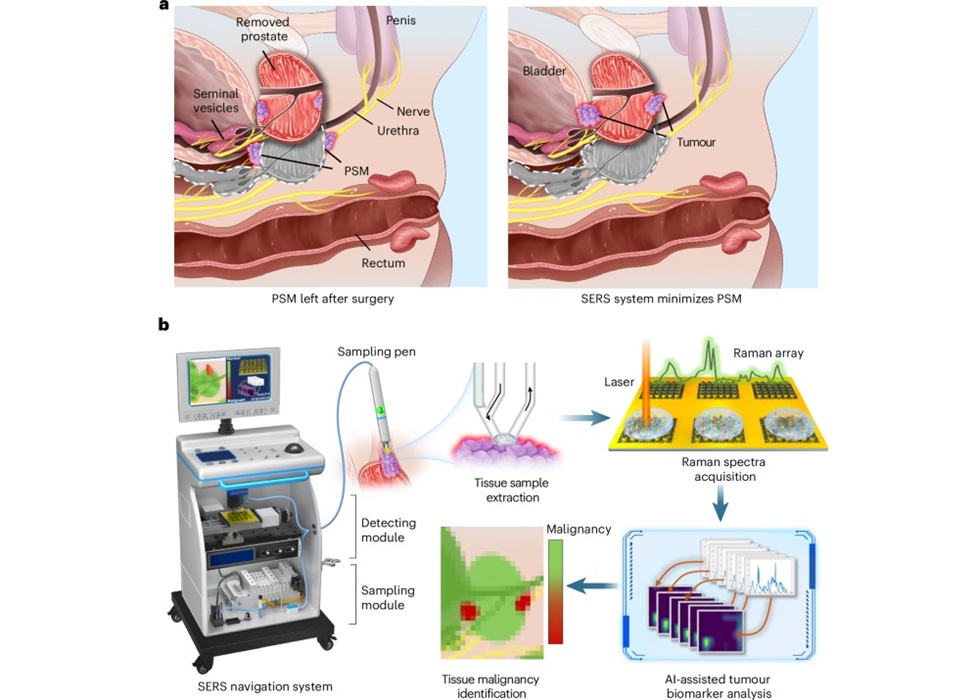Nurses Can Help Reduce Sepsis Mortality
|
By HospiMedica International staff writers Posted on 14 Apr 2014 |
An evidence-based nursing protocol can help reduce sepsis mortality rates and increase nurse satisfaction.
Researchers at University of New Mexico Hospitals (Albuquerque, USA) and Great River Health System (Burlington, IA, USA) joined forces to form the Sepsis Mortality Improvement Team (SMITe), which developed several tools to assist nursing staff in the diagnosis and treatment of sepsis. The tools included a screening tool that allows nurses to review sepsis-related symptoms; outlined steps the nurse must take in caring for patient with suspected sepsis; an electronic sepsis order set; and verbal order telephone scripts to support communication between the nurse and the physician.
Through the use of the protocol and the tools developed by the SMITe and staff educators, the nurses were able to recognize patients with sepsis, order laboratory tests, and initiate treatment. Daily patient reports were held between a dedicated rapid response team (RRT) and the unit director to support rapid bed placement and initiation of the sepsis protocol. During the first two years after the initiative began, 225 adult patients screened positive for sepsis and less than 112 deaths occurred, representing a 50% decrease in mortality.
Indirectly, the sepsis screening process led to greater nurse satisfaction as reported in satisfaction surveys, which increased from 72% to 78% on the Hospital Consumer Assessment of Healthcare Providers and Systems survey, based on staff ability to identify early signs and symptoms of sepsis, order necessary tests to substantiate a diagnosis of sepsis, and initiate the protocol. The study detailing the new sepsis protocol and the results of its implementation was published in the January/February 2014 issue of MEDSURG Nursing Journal.
“Results of this project indicated nurses can make a significant contribution to patient care by identifying problems, reviewing the literature, and initiating evidence-based protocols,” concluded lead author Kathy Lopez-Bushnell, EdD, MPH, MSN, APRN, director of nursing research at University of New Mexico Hospitals. “Other factors that contributed to the project’s success included the use of a highly functional interdisciplinary group, access to relevant literature, the presence of a strong clinical component, and the funding of the University of New Mexico Hospitals.”
Sepsis is characterized by a whole-body inflammatory state caused by the immune system's response to a serious infection, most commonly bacteria, but also fungi, viruses, and parasites in the blood, urinary tract, lungs, skin, or other tissues. Common symptoms of sepsis include those related to a specific infection, but usually accompanied by high fevers, hot, flushed skin, elevated heart rate, hyperventilation, altered mental status, swelling, and low blood pressure. Sepsis causes millions of deaths globally each year.
Related Links:
University of New Mexico Hospitals
Great River Health System
Researchers at University of New Mexico Hospitals (Albuquerque, USA) and Great River Health System (Burlington, IA, USA) joined forces to form the Sepsis Mortality Improvement Team (SMITe), which developed several tools to assist nursing staff in the diagnosis and treatment of sepsis. The tools included a screening tool that allows nurses to review sepsis-related symptoms; outlined steps the nurse must take in caring for patient with suspected sepsis; an electronic sepsis order set; and verbal order telephone scripts to support communication between the nurse and the physician.
Through the use of the protocol and the tools developed by the SMITe and staff educators, the nurses were able to recognize patients with sepsis, order laboratory tests, and initiate treatment. Daily patient reports were held between a dedicated rapid response team (RRT) and the unit director to support rapid bed placement and initiation of the sepsis protocol. During the first two years after the initiative began, 225 adult patients screened positive for sepsis and less than 112 deaths occurred, representing a 50% decrease in mortality.
Indirectly, the sepsis screening process led to greater nurse satisfaction as reported in satisfaction surveys, which increased from 72% to 78% on the Hospital Consumer Assessment of Healthcare Providers and Systems survey, based on staff ability to identify early signs and symptoms of sepsis, order necessary tests to substantiate a diagnosis of sepsis, and initiate the protocol. The study detailing the new sepsis protocol and the results of its implementation was published in the January/February 2014 issue of MEDSURG Nursing Journal.
“Results of this project indicated nurses can make a significant contribution to patient care by identifying problems, reviewing the literature, and initiating evidence-based protocols,” concluded lead author Kathy Lopez-Bushnell, EdD, MPH, MSN, APRN, director of nursing research at University of New Mexico Hospitals. “Other factors that contributed to the project’s success included the use of a highly functional interdisciplinary group, access to relevant literature, the presence of a strong clinical component, and the funding of the University of New Mexico Hospitals.”
Sepsis is characterized by a whole-body inflammatory state caused by the immune system's response to a serious infection, most commonly bacteria, but also fungi, viruses, and parasites in the blood, urinary tract, lungs, skin, or other tissues. Common symptoms of sepsis include those related to a specific infection, but usually accompanied by high fevers, hot, flushed skin, elevated heart rate, hyperventilation, altered mental status, swelling, and low blood pressure. Sepsis causes millions of deaths globally each year.
Related Links:
University of New Mexico Hospitals
Great River Health System
Latest Critical Care News
- Magnetically Guided Microrobots to Enable Targeted Drug Delivery

- Smart Nanomaterials Detect and Treat Traumatic Brain Injuries Simultaneously
- Earlier Blood Transfusion Could Reduce Heart Failure and Arrhythmia in Heart Disease Patients
- 'Smart' Shirt Detects Epileptic Seizures in Real Time
- Skin Patch Measures Effectiveness of Flu/COVID Vaccines in 10 Minutes
- Complete Revascularization Reduces Risk of Death from Cardiovascular Causes
- Tiny Fish-Inspired Robots Navigate Through Body to Deliver Targeted Drug Therapy
- Coronary Artery Stenosis Could Protect Patients from Pulmonary Embolism Effects
- Sweat-Powered Sticker Turns Drinking Cup into Health Sensor
- Skin-Mounted 3D Microfluidic Device Analyzes Sweat for Real-Time Health Assessment
- New Therapeutic Brain Implants to Eliminate Need for Surgery
- Stem Cell Patch Gently Heals Damaged Hearts Without Open-Heart Surgery
- Biomaterial Vaccines to Make Implanted Orthopedic Devices Safer
- Deep Learning Model Predicts Sepsis Patients Likely to Benefit from Steroid Treatment
- Programmable Drug-Delivery Patch Promotes Healing and Regrowth After Heart Attack
- Breakthrough Ultrasound Technology Measures Blood Viscosity in Real Time
Channels
Surgical Techniques
view channel
Breakthrough Surgical Device Redefines Hip Arthroscopy
Hip arthroscopy has surged in popularity, yet surgeons still face major mechanical constraints when navigating deep joint spaces through traditional cannulas. Limited tool mobility and the need for an... Read more
Automated System Enables Real-Time "Molecular Pathology" During Cancer Surgery
Accurately identifying tumor boundaries during radical prostatectomy remains one of the most persistent challenges in prostate cancer care. Positive surgical margins occur in up to 40% of cases, increasing... Read morePatient Care
view channel
Revolutionary Automatic IV-Line Flushing Device to Enhance Infusion Care
More than 80% of in-hospital patients receive intravenous (IV) therapy. Every dose of IV medicine delivered in a small volume (<250 mL) infusion bag should be followed by subsequent flushing to ensure... Read more
VR Training Tool Combats Contamination of Portable Medical Equipment
Healthcare-associated infections (HAIs) impact one in every 31 patients, cause nearly 100,000 deaths each year, and cost USD 28.4 billion in direct medical expenses. Notably, up to 75% of these infections... Read more
Portable Biosensor Platform to Reduce Hospital-Acquired Infections
Approximately 4 million patients in the European Union acquire healthcare-associated infections (HAIs) or nosocomial infections each year, with around 37,000 deaths directly resulting from these infections,... Read moreFirst-Of-Its-Kind Portable Germicidal Light Technology Disinfects High-Touch Clinical Surfaces in Seconds
Reducing healthcare-acquired infections (HAIs) remains a pressing issue within global healthcare systems. In the United States alone, 1.7 million patients contract HAIs annually, leading to approximately... Read moreHealth IT
view channel
Printable Molecule-Selective Nanoparticles Enable Mass Production of Wearable Biosensors
The future of medicine is likely to focus on the personalization of healthcare—understanding exactly what an individual requires and delivering the appropriate combination of nutrients, metabolites, and... Read moreBusiness
view channel
Philips and Masimo Partner to Advance Patient Monitoring Measurement Technologies
Royal Philips (Amsterdam, Netherlands) and Masimo (Irvine, California, USA) have renewed their multi-year strategic collaboration, combining Philips’ expertise in patient monitoring with Masimo’s noninvasive... Read more
B. Braun Acquires Digital Microsurgery Company True Digital Surgery
The high-end microsurgery market in neurosurgery, spine, and ENT is undergoing a significant transformation. Traditional analog microscopes are giving way to digital exoscopes, which provide improved visualization,... Read more
CMEF 2025 to Promote Holistic and High-Quality Development of Medical and Health Industry
The 92nd China International Medical Equipment Fair (CMEF 2025) Autumn Exhibition is scheduled to be held from September 26 to 29 at the China Import and Export Fair Complex (Canton Fair Complex) in Guangzhou.... Read more












